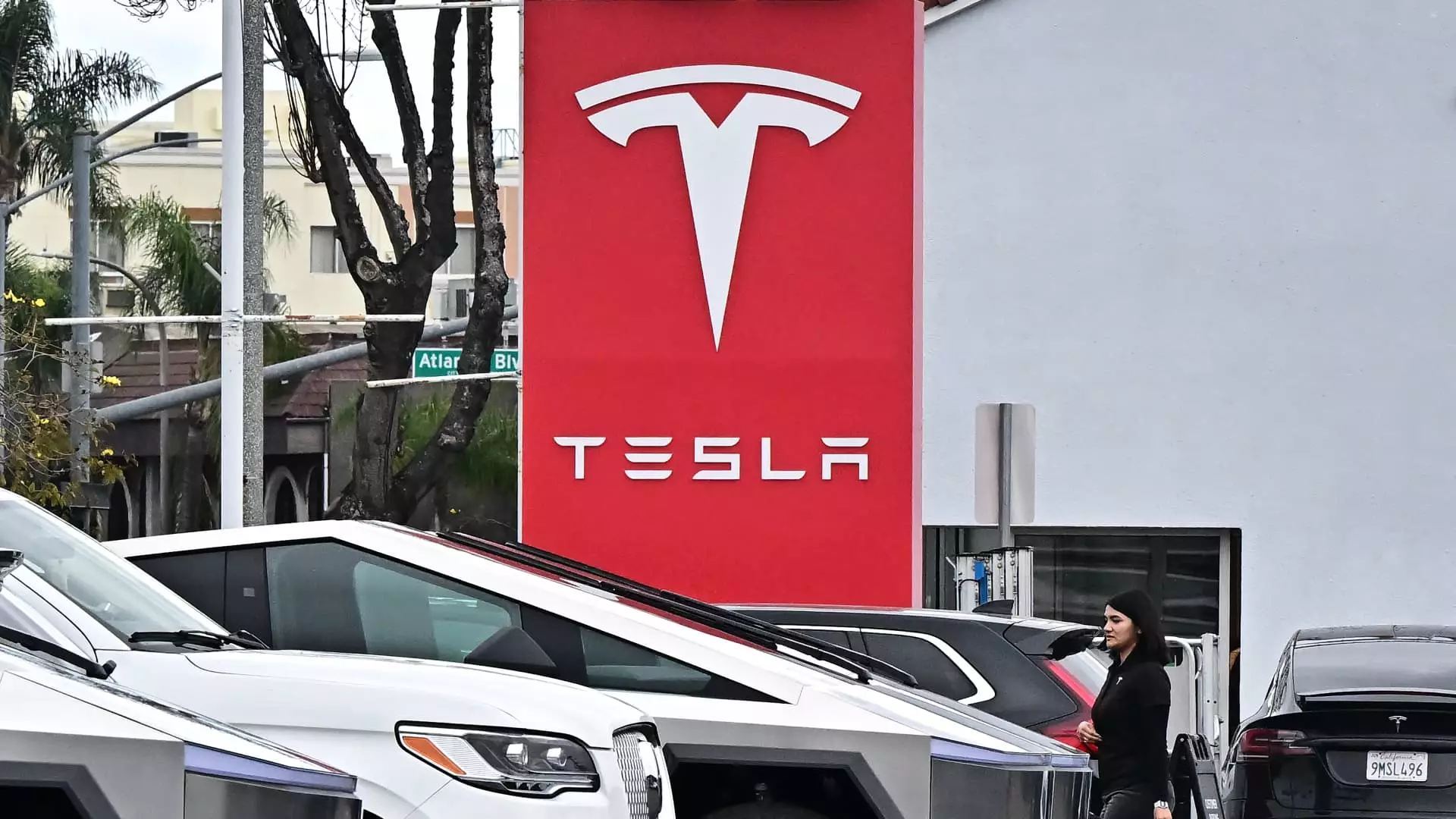In the ever-changing landscape of the automobile industry, Tesla’s once-celebrated status now teeters on the precarious edge of doubt. Wall Street analysts, who have long played the role of optimistic interpreters of the electric vehicle (EV) market, are now conveying a dismal sentiment toward Tesla’s future. Recent downgrades from major financial institutions like Goldman Sachs, UBS, and Mizuho reveal that the specter of trade tensions and economic uncertainty is reshaping perceptions of the electric giant. The critical question emerges: Is Tesla overvalued in an environment defined by unpredictability?
Analyst Cuts Signal Deeper Problems
Analysts have slashed their price targets for Tesla, and the numbers speak volumes. UBS has lowered its target from $225 to $190, suggesting a staggering 30% potential decline. Goldman Sachs adjusted its target downwards to $260 from $275, reflecting a modest anticipated decline. Mizuho offered a slightly more optimistic perspective, yet still revised its target from $430 to $375, indicating a 38% upside. But what lies behind these numbers?
The recent downgrades highlight a growing consensus among experts questioning Tesla’s earnings trajectory post-2025. Joseph Spak from UBS exemplifies this outlook: the potential for negative earnings revisions looms large on the horizon. In simpler terms, these cuts may signal that the rosy projections for Tesla’s earnings aren’t grounded in the evolving reality of trade uncertainties and consumer sentiment.
Trade Tensions: An Electric Dilemma
The ongoing trade tensions, particularly regarding tariffs, represent a significant thorn in Tesla’s side, especially in its ventures within the energy sector. As the Biden administration grapples with China and its geopolitical aspirations, Tesla faces potential manufacturing hurdles that could erode its competitive advantages in the EV market. As Spak articulates, a comprehensive view of Tesla’s earnings must consider the fallout from tariffs impacting not only vehicle production but energy components as well.
Investors must recognize the broader implications of these tensions. For Tesla, the shift in policy and economics threatens to unveil vulnerabilities that were obscured during earlier years of rapid growth. The interplay of weakening demand and tariff costs paints a grim picture for the company’s near future.
Consumer Sentiment: A Detailed Deterioration
Weaker consumer sentiment is another bastion of concern for Tesla’s future. The EV market, once a beacon of hope amidst an uncertain automotive landscape, is now showing signs of potential contraction. As inflation weighs heavily on the average consumer, the allure of electric vehicles—a largely discretionary purchase—may diminish.
Analysts like Mark Delaney from Goldman Sachs illustrate this dilemma well, emphasizing how industry challenges like tariffs can affect demand across the board. As consumers tighten their belts amidst economic stagnation, the prevailing belief that the EV market was recession-proof appears increasingly naive.
Leadership Under Fire: Elon Musk’s Dual Role
Elon Musk’s position is another variable in this complex equation. While many investors historically viewed him as a visionary, further scrutiny reveals growing backlash against his ties to political influences. The notion that a company’s success can be detached from its CEO’s behavior is being tested as Musk’s political affiliations come under fire, especially within a polarized climate.
The increased scrutiny may prompt potential investors to reconsider their alignment with Tesla—an unintended consequence of heightened political tensions. The leadership dynamics could inadvertently stifle innovation and deter potential partnerships crucial for the company to maintain its competitive edge.
Long-Term Potential vs. Immediate Risks
Despite the headwinds, some analysts still endorse Tesla’s potential in AI and energy initiatives, prompts an urgent discussion over the variability of long-term versus short-term valuations. The argument from Mizuho’s Vijay Rakesh acknowledges Tesla’s current lead in the US EV space, yet it starkly contrasts with the mounting competition from both European and Chinese rivals.
This competitive landscape signals an existential challenge for Tesla as it risks losing its pioneering status. For every step forward in technology, the market desperately needs assurance that Tesla can innovate faster than burgeoning competitors.
Ultimately, the question remains: Can Tesla reinvent itself amidst escalating challenges? While the potential is indubitable, the current markers of trade challenges and consumer sentiment mustn’t be ignored. In this fraught environment, stakeholders must grapple with the uncomfortable reality that Tesla’s path forward may not be as shiny as it once appeared.

